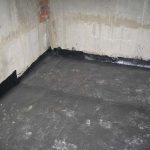Content
-
1 How to choose materials for construction
- 1.1 Wood
- 1.2 Brick
- 1.3 Concrete
Environmentally friendly finishing materials are gaining more and more popularity. Their advantage is that even after several years of operation, they do not emit toxic substances.

How to choose materials for construction
The most famous building materials that do not adversely affect the body are wood, concrete and brick. Of course, their cost can puzzle many people, but if certain conditions are met, it decreases markedly. And so much so that the coverage even goes into the budget category.
Wood
Wood is a material that is considered the safest and most expensive. But raw wood is much cheaper and completely does not lose its properties. Therefore, in order to save money, you can conduct an independent treatment with compounds that increase resistance to fire and moisture. In addition, antiseptic drugs that prevent the development of mold will be required.

When buying funds, you need to carefully study their packaging. It must be marked “eco-friendly”, otherwise all efforts to find and process the material will be minimized.
Brick
When buying a brick, builders recommend taking a closer look at silicate and ceramic products. Silicate is made of sand and lime, and ceramic is made of clay, which is fired.

Concrete
Perhaps the most budget material. It consists of cement, sand, gravel and plain water. Aerated concrete, for example, in Europe is considered to be such a safe material that in its characteristics in this regard it is second only to wood.

You should also decide in advance the issue associated with wall insulation. After all, what is the point of looking for environmentally friendly material for construction, if the insulation will emit harmful substances?
It’s best, of course, to choose natural materials. Such popular polystyrene and mineral wool should be immediately removed from your list. Styrofoam releases styrene, and the composition of the cotton wool includes phenol-formaldehyde components.

The basis of health-friendly heaters - flax, cotton, cellulose. Being completely safe, they provide high-quality protection against excessive noise from the street and retain heat in the house. Additionally, they are able to normalize the humidity level in the room, as they have good vapor permeability.

This means that the structure of the material absorbs excess moisture from the air, gradually accumulating it. When it gets too dry, moisture flows back into the surrounding area. Due to this ability, comfortable conditions are provided.
-
 Where a cheap substandard corrugated board is useful in construction
Where a cheap substandard corrugated board is useful in construction
-
 What are the disadvantages of expanded clay as a heater
What are the disadvantages of expanded clay as a heater
-
 What is the difficulty of gluing fiberboard to the walls
What is the difficulty of gluing fiberboard to the walls
-
 What are the disadvantages of a polycarbonate roof
What are the disadvantages of a polycarbonate roof
-
 Which foam block is not suitable for building a house
Which foam block is not suitable for building a house
-
 Which windows are better: plastic or wooden
Which windows are better: plastic or wooden
-
 Why is marmoleum the best flooring?
Why is marmoleum the best flooring?
-
 Why penetrating waterproofing the basement from the inside is not done
Why penetrating waterproofing the basement from the inside is not done
-
 Than latex foam is better than other construction foam
Than latex foam is better than other construction foam
-
 In which cases it is impossible to add waste oil to bitumen
In which cases it is impossible to add waste oil to bitumen
-
 Why you should not replace the ondulin brand horse with a metal one
Why you should not replace the ondulin brand horse with a metal one
-
 What to choose - pressed fittings or crimp fittings
What to choose - pressed fittings or crimp fittings
New publications are published daily on our channel in Yandex. Zen
Go to Yandex. Zen


